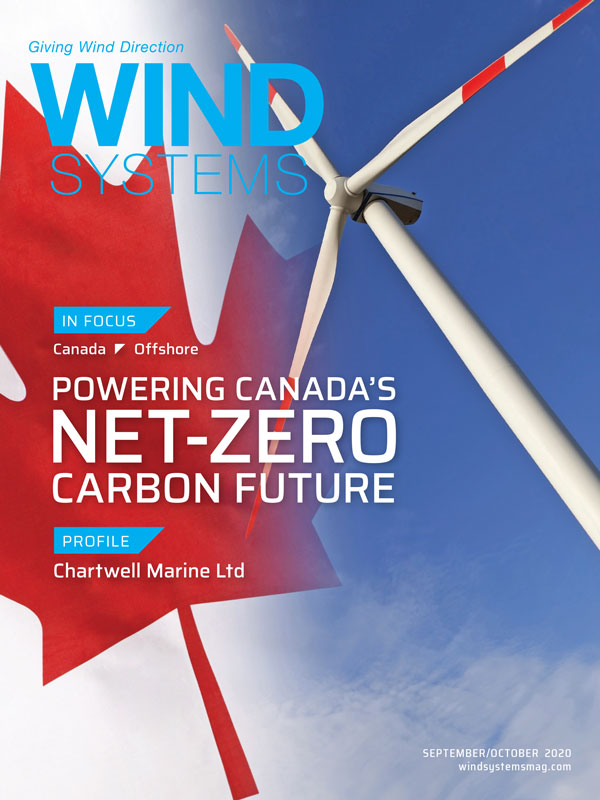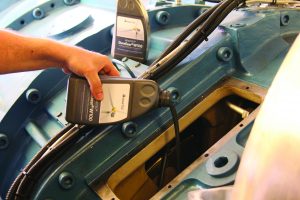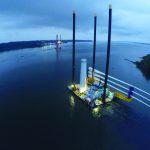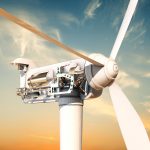Wind power continues to offer a potential alternative approach for generating electricity that is more environmentally friendly. But the severe operating conditions placed on the lubricant in gearboxes needed to convert low-speed wind energy to high-speed energy in the wind turbine have decreased the ability for operating at an optimum level for a long period of time.
This factor is particularly critical because wind turbines are in remote locations, making it very difficult and costly to maintain them. The potential use of wind turbines in offshore farms has a much higher potential for generating electricity than on land but faces greater challenges. One of the operational issues has been the premature failure of gearboxes. In the U.S., only one offshore wind farm has been commercialized off the coast of the state of Rhode Island.
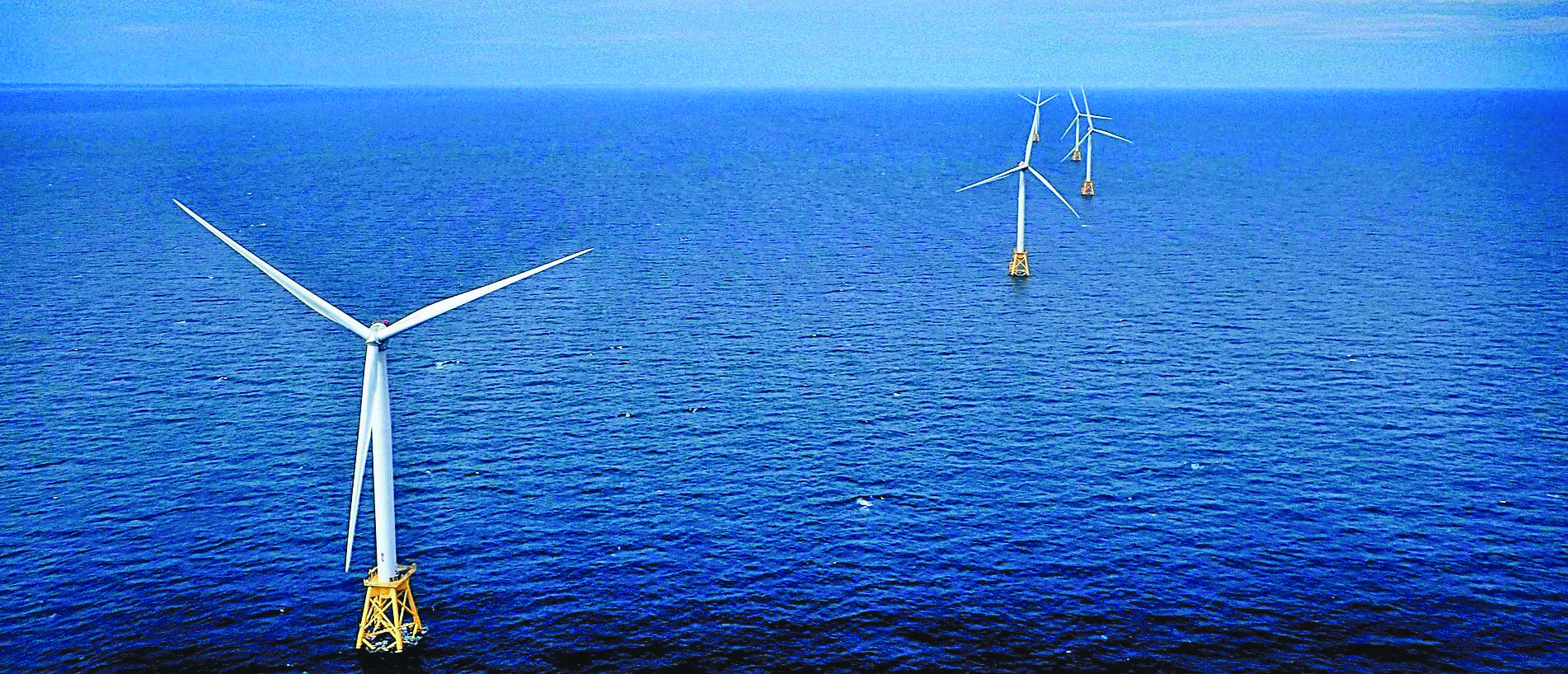
In a Tribology & Lubrication Technology article [1], researchers determined that placement of a wind farm in the North Atlantic Ocean would produce a higher electricity output than wind farms of a comparable size on land in a state such as Kansas. The key parameter is the kinetic energy extraction rate, which measures the amount of wind energy available for turbines. The kinetic energy extraction rate is four times higher in the North Atlantic Ocean than on land.
“The U.S. Department of Energy (DOE) published a 2015 study [2] that developed scenarios for producing over 80 GW of offshore wind power by 2050,” said Dr. Tomer Fishman, a former post-doctoral associate at the Yale University School of Forestry & Environmental Studies in New Haven, Connecticut, and a lecturer at the Interdisciplinary Center IDC Herzliya in Herzliya, Israel. “This study envisioned that the U.S. will be able to not only boost wind power but potentially create a domestic industry that would include the potential production of turbines.”
Several factors not covered in the DOE study may reduce the potential for using wind energy, particularly offshore. One of these issues is directly related to the challenges faced in using gearboxes in wind turbines.
“Operational difficulties with using gearboxes in offshore wind turbines led the wind power industry to evaluate the use of direct drive systems,” Fishman said. “This technology initially was more expensive and heavier than gearboxes, but ongoing developments have led to reductions in cost and weight.”
Fishman and his co-author, Thomas Graedel, professor emeritus at the Yale University School of Forestry & Environmental Studies, have now conducted a study to complement DOE’s vision of offshore wind energy and demonstrate that other factors must be considered to predict the future use of wind turbines in the U.S.
The focus of the study conducted by Fishman and Graedel deals with the fact that DOE did not factor in the availability and use of the rare-earth metal neodymium in its 2015 study.
“Rare-earth metals, in general, are considered to be critical raw materials necessary for the long-term growth of the U.S. economy,” Fishman said. “The concern about them is their long-term supply because there is only one country processing most of the rare-earth metals: China.”
Fishman explained that rare-earth metals are less economically available and are needed for critical applications such as computers and electric vehicles. The permanent magnet systems used in direct drive systems are based on neodymium, iron, and boron because they demonstrate the most efficient generation of electricity and enable the design of wind turbines that are lighter and more compact.
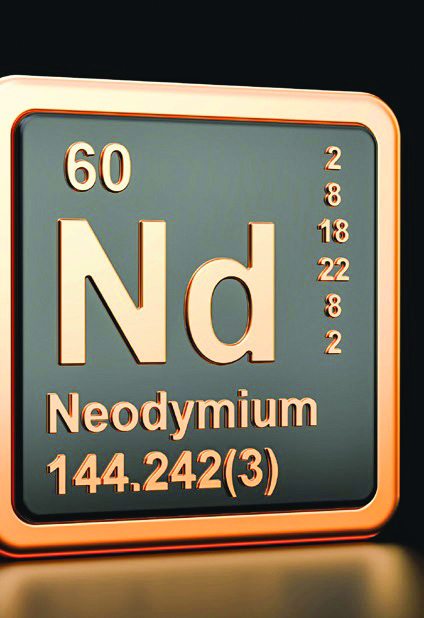
Nearly all of the world’s neodymium is mined in China, according to Fishman.
“The supply chain for producing the wind turbines off the Rhode Island coast were prepared from a vulnerable and complex supply chain that started in China and then went through Japan and France before ending up in the U.S.,” he said. “The purpose of our study was to develop what-if scenarios regarding the use of neodymium in wind turbines over the next 30 years until 2050. Approximately 15,500 metric tons of neodymium are predicted to be required during this time. We believe that 20 percent of this usage could be avoided through the development of recycling techniques and more effective magnets.”
The U.S. was divided into five distinct regions (Northeast, Mid-Atlantic, Pacific, Great Lakes, and Gulf) because demand for wind power will not be uniform.
“Each of these regions has its own requirements for wind energy, which will impact the demand for neodymium,” Fishman said.
The researchers used a materials flow analysis to evaluate the supply and demand for neodymium.
“This approach represents a framework to account for the demand, supply, and use of neodymium,” Fishman said. “It is similar to how a company will assess earnings, losses, and profitability through accounting practices.”
A second rare-earth metal, dysprosium, also is used in neodymium, iron, and boron permanent magnets to a smaller extent and will face the same supply situation.
“We expressed similar concerns about dysprosium, which enables the permanent magnetic to perform under more severe conditions such as higher stress and higher temperatures,” Fishman said.
The researchers hope that by factoring in the supply and demand for rare-earth metals, the U.S. will be able to develop a successful wind-energy program. Additional information on this study can be found in a recent Nature Sustainability article [3] or by contacting Fishman at Tomer.fishman@idc.ac.il.
REFERENCES
- Canter, N. (2018), “Open ocean wind farms,” TLT, 74 (3), pp. 18-20.
www.energy.gov/sites/prod/files/2015/03/f20/wv_executive_summary_overview_and_key_chapter_findings.pdf. - Fishman, T. and Graedel, T. (2019), “Impact of the establishment of US offshore wind power on neodymium flows,” Nature Sustainability, 2, pp. 332-338.
















